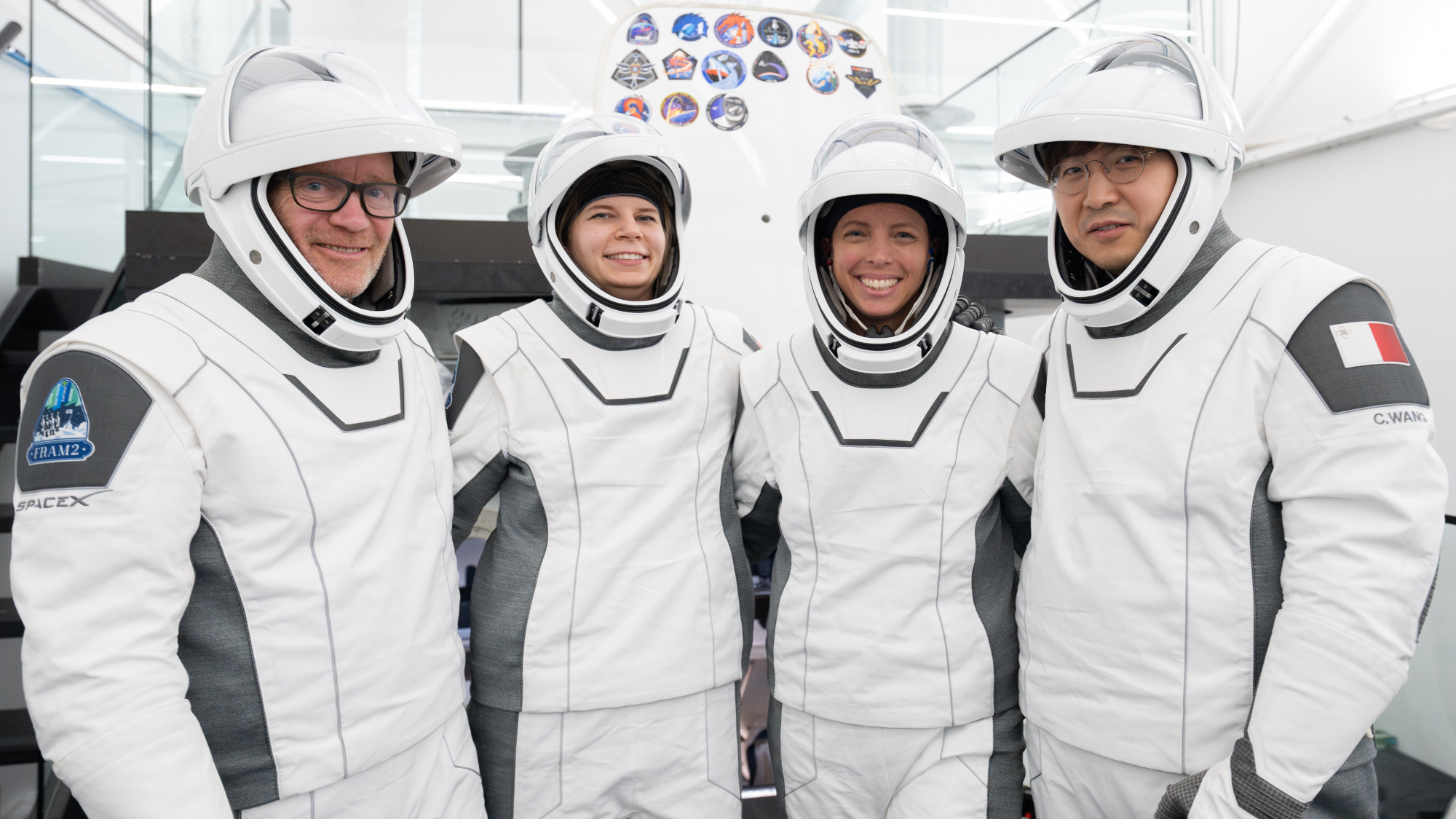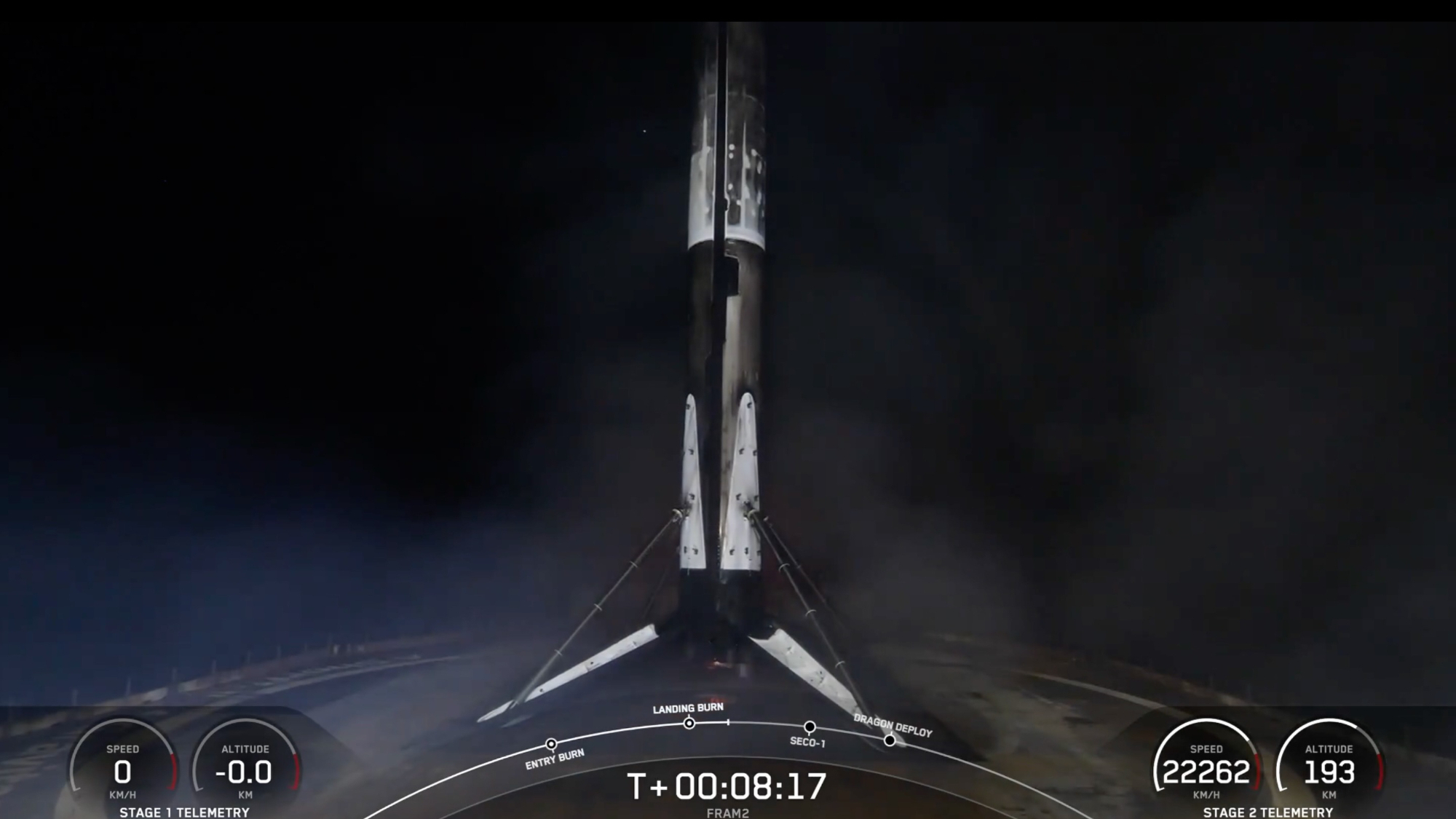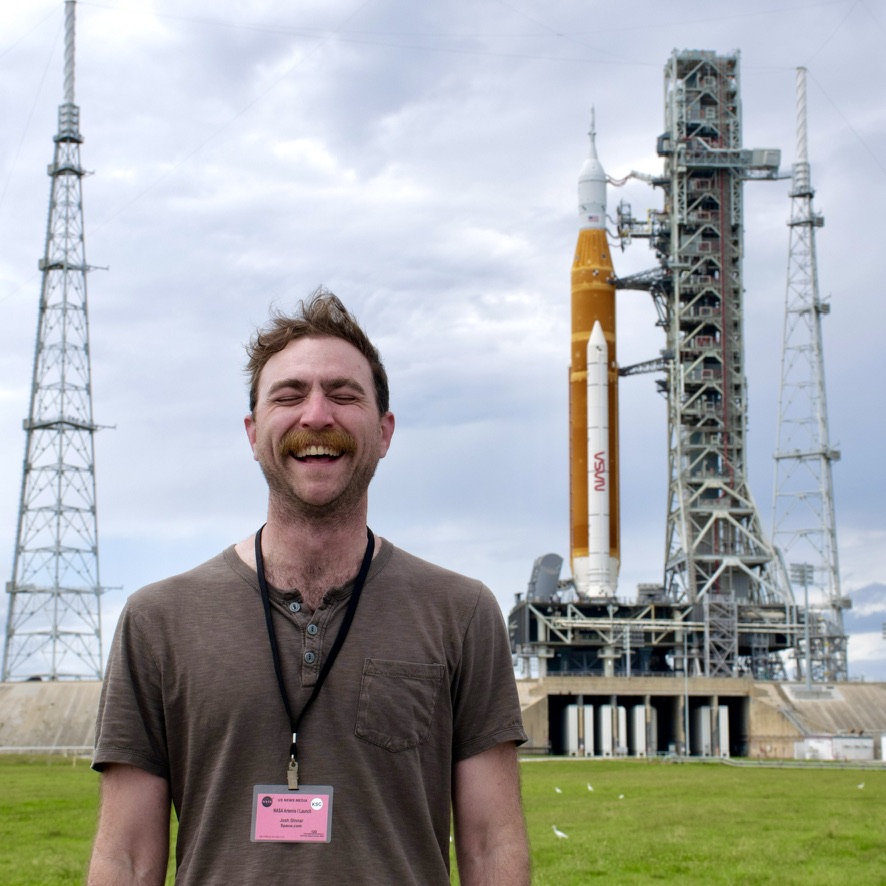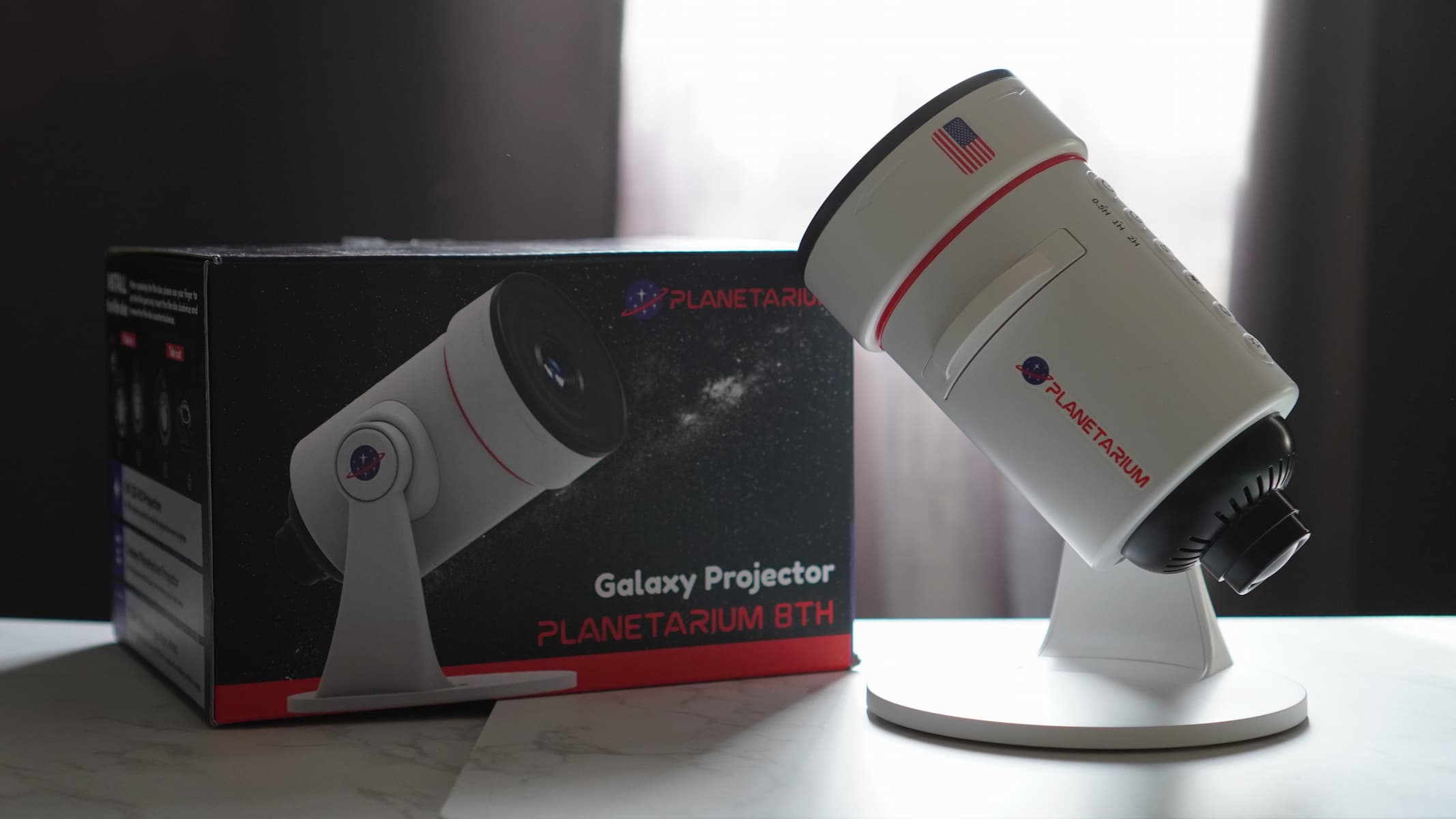SpaceX launches private Fram2 astronauts on historic spaceflight over Earth's poles
The Fram2 crew will see Earth like no one ever has before.
SpaceX just launched the first-ever human spaceflight to circle Earth over its poles.
The private Fram2 mission lifted off atop a Falcon 9 rocket from Launch Complex-39A at NASA's Kennedy Space Center in Florida today (March 31) at 9:46 p.m. EDT (0146 GMT on April 1), sending the Crew Dragon capsule "Resilience" into a polar orbit with a quartet of spaceflight rookies aboard.
Fram2 is commanded Chun Wang of Malta, who is joined by vehicle commander Jannicke Mikkelsen from Norway, pilot Rabea Rogge of Germany, and Australian medical officer and mission specialist Eric Phillips.

A short 2.5 minutes after liftoff, the Falcon 9's first-stage booster shut down its nine Merlin engines, executed stage separation from the rest of the rocket and performed a deceleration burn to put itself on a trajectory to land on SpaceX's A Shortfall of Gravitas droneship in the Atlantic Ocean, which happened on schedule about 5.5 minutes later.
Related: Meet the astronauts of SpaceX's Fram2 mission, the 1st to fly over Earth's poles
The Falcon 9's second stage continued into low Earth orbit and released Resilience to fly on its own just under 10 minutes after liftoff. Now, the crew will spend the next three to five days circling above the planet's most remote locations, to see the poles like no other human ever has.
"Dragon, on behalf of the Falcon team, we're honored to deliver you safely to your polar orbit," Bill Gerstenmaier, vice president of build and flight reliability at SpaceX, told the Fram2 crew shortly after spacecraft separation.
Breaking space news, the latest updates on rocket launches, skywatching events and more!
"Enjoy the views of the poles," he added. "Send us some pictures, and our hearts and minds will be flying with you as you go over the poles. Have a great flight!"
Fram2 is named after the late 19th century Norwegian seafaring ship "Fram," which explored the Arctic and Antarctic regions at the turn of the 20th century. ("Fram" is Norwegian for "forward" or "onward.")
Fram2 carries on the exploration spirit of its ocean-going predecessor. It carries a total of 22 experiments the crew will conduct during the mission, including the first attempt to grow mushrooms in space and a machine that will capture the first on-orbit X-rays of the human body. Other experiments will investigate the effects of microgravity on the human musculoskeletal system during spaceflight.

Fram2 is SpaceX's 17th human spaceflight overall, and the sixth launched for private customers. Resilience has now flown four of those; the capsule also conducted Crew-1, SpaceX first operational astronaut mission to the International Space Station (ISS) for NASA, as well as Inspiration4 and Polaris Dawn, the company's first and most recent private crew launches to Earth orbit, respectively.
The Fram2 launch came two weeks and three days after the liftoff of SpaceX's Crew-10 mission to the ISS for NASA — the shortest time to date between SpaceX astronaut launches.
Fram2 is expected to last between three and five days. It will end with a Pacific Ocean splashdown — the first for a SpaceX astronaut mission. The company's other crewed flights have all landed off the coast of Florida, but SpaceX is shifting returns to the West Coast to minimize the chances that pieces of Dragon could hurt people or damage property on the way down to Earth.
One final research experiment will take place upon landing, as the crew will forgo the typical medical and mobility assistance normally utilized by astronauts following spaceflight while their bodies reacclimate to gravity.
Join our Space Forums to keep talking space on the latest missions, night sky and more! And if you have a news tip, correction or comment, let us know at: community@space.com.

Josh Dinner is the Staff Writer for Spaceflight at Space.com. He is a writer and photographer with a passion for science and space exploration, and has been working the space beat since 2016. Josh has covered the evolution of NASA's commercial spaceflight partnerships and crewed missions from the Space Coast, as well as NASA science missions and more. He also enjoys building 1:144-scale model rockets and human-flown spacecraft. Find some of Josh's launch photography on Instagram and his website, and follow him on X, where he mostly posts in haiku.
You must confirm your public display name before commenting
Please logout and then login again, you will then be prompted to enter your display name.
